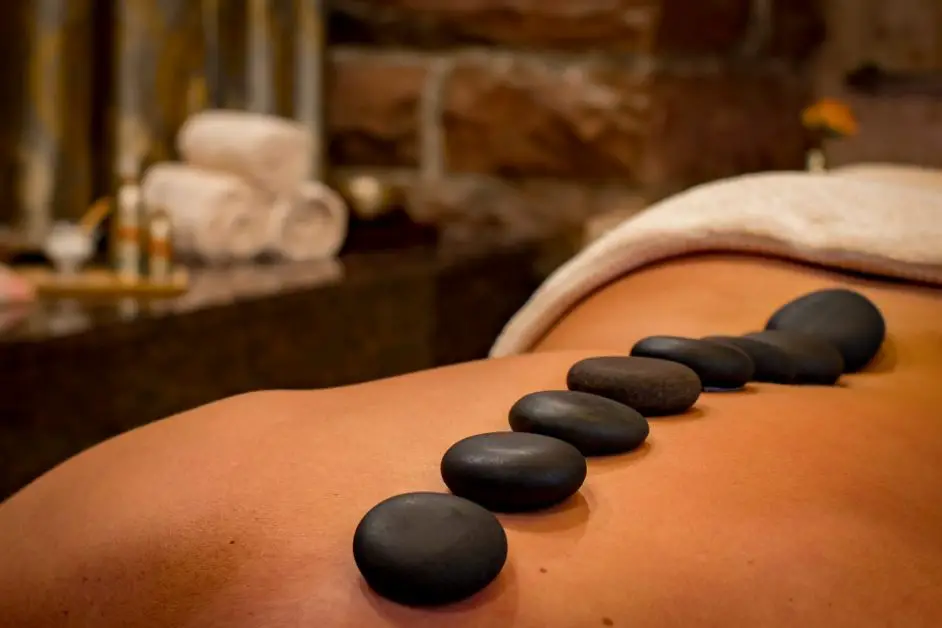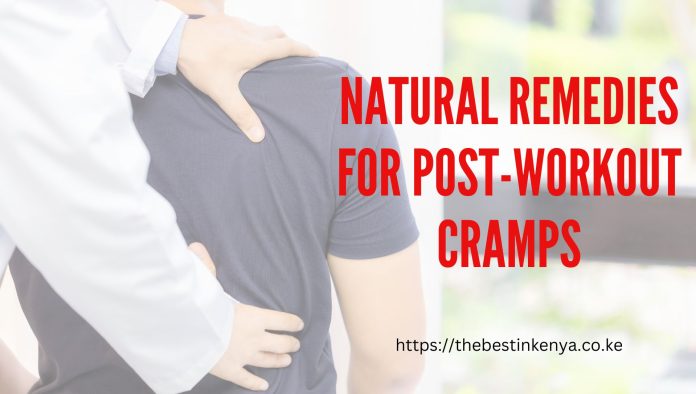Working out is an important part of staying healthy and fit. However, it can also lead to muscle cramps and soreness. Fortunately, there are natural remedies that can help relieve workout muscle pains and cramps.
Let’s explore 10 such remedies that you can use to alleviate muscle cramps and soreness after a workout.
From stretching exercises to herbal teas, these tips will help you get back in action as quickly as possible without the need for medication or other costly treatments.
Why Do Muscle Cramps And Soreness Happen?
Muscle cramps and soreness are commonly caused by intense physical activity.
Intense physical activity can cause the muscles to become overworked, leading to fatigue and lactic acid buildup that can cause pain, stiffness, and cramping.
Muscle strains and tears can also occur during exercise due to imbalances in strength or flexibility.
The most common cause of muscle cramps and soreness is dehydration, which can lead to electrolyte imbalances.
Natural Remedies for Post-Workout Muscle Cramps and Soreness
1. Stretching
Stretching is an excellent way to reduce post-workout muscle soreness and cramps. It helps you increase flexibility, reduce tension in the muscles, and improve your overall range of motion.
To properly stretch, focus on each muscle group for at least 30 seconds. Begin by stretching the major muscles used in your activity (e.g., quadriceps, hamstrings, calves).
For more targeted stretches, bend and rotate your joints (e.g., ankles, wrists). You can also do full-body motions such as arm circles or trunk twists.
Be sure to keep each stretch comfortable and controlled. You can consider using home workout apps for guided activities.
2. Massage

Massage improves circulation and breaks down adhesions, or sore areas of tissue, in the muscle fibers.
It also stimulates endorphins to reduce pain and provide relaxation.
To get the most out of a massage, use various techniques such as kneading, rubbing, and circular motion.
To make sure you’re not using too much pressure, ask your massage therapist for more guidance.
3. CBD oil
Cannabidiol oil is a natural remedy that may help reduce muscle cramps and soreness associated with exercise and physical activity.
CBD works by interacting with the body’s endocannabinoid system (ECS). ECS is responsible for regulating pain, stress, mood, energy levels, sleep cycles and more. The ECS also plays a key role in muscle relaxation and recovery.
Studies show that good-quality CBD oil can help reduce inflammation, which is often a cause of soreness and cramps.
When using CBD oil for post-workout cramps and soreness, it’s important to remember to start small with the dosage. A good starting point is 10-20 mg of CBD oil daily.
It’s also important to “listen” to your body and adjust the dosage as needed.
In addition to taking CBD oil orally, you can also use it topically for localized soreness and cramps.
Simply apply a small amount of CBD-infused cream or salve directly onto the affected area. This can provide quick relief from muscle pain and spasms.
4. Foam Rolling
Foam rolling is a form of self-massage technique that can help reduce post-workout muscle cramps and soreness.
It involves using a foam roller—a cylindrical piece of foam about the size of a rolled-up yoga mat—to apply pressure to tight muscles, giving you an instant massage as it rolls over them.
Foam rolling is thought to increase flexibility, reduce muscle tension, and improve circulation.
To use a foam roller, start by sitting or lying on the floor with it beneath the muscles that feel tight or sore.
Roll slowly back and forth for about 20-30 seconds per area, applying mild pressure to areas that feel particularly tight.
You can also use the foam roller to give yourself a massage, focusing on any areas of soreness you may have.
5. Heat Therapy
The heat helps relax tight muscles and increase circulation. This allows your body to flush out lactic acid buildup that can cause pain.
Applying heat directly to the affected area can be done using a heating pad, hot water bottle, or warm towel.
It’s important to remember that if you apply heat, you should follow it up with cold therapy (ice packs) to reduce inflammation and enhance the healing process.
6. Ice Therapy
Ice therapy is incredibly popular for treating post-workout muscle soreness and cramps. It reduces inflammation by numbing the affected area, reducing swelling, and providing a cooling sensation.
Ice can also help to reduce pain levels associated with sore muscles.
To use ice therapy properly, apply an ice pack directly onto the sore area for 15 to 20 minutes at a time, several times a day.
7. Compression
This remedy can help reduce post-workout muscle cramps and soreness by providing support to the strained muscles.
Compression garments such as wraps, sleeves, socks, and shorts can be used to apply targeted pressure on aching muscles. It helps increase blood flow in the area and promotes faster healing.
To use it properly, ensure the garment is not too tight, which can cause further discomfort and impede circulation.
Apply the compression wrap slowly and gradually increase pressure as needed to prevent any bruising or other injury.
Ensure you remove the garment once the session is over to reduce any risk of skin irritation or infection.
8. Hydration
Staying hydrated helps maintain the balance of electrolytes. These are minerals that help regulate nerve impulses and muscle contractions throughout the body.
When the body lacks water, it can’t efficiently transport these electrolytes, leading to cramping and soreness.
Drinking plenty of water before, during, and after workouts is important to help reduce the risk of cramping and soreness.
9. Nutrition
Eating the right types of foods can help provide your body with the necessary nutrients to promote muscle growth and repair, reduce inflammation, and decrease soreness.
Consuming a balanced diet that is rich in protein, fiber-rich carbohydrates, essential fatty acids (omega 3s), vitamins, and minerals can help speed up muscle recovery.
Eating certain post-workout snacks can also provide essential nutrients for your muscles to recover.
Some of the best post-workout snacks you should consider eating include a banana or orange with a handful of nuts or seeds. Other options are Greek yogurt with fresh berries; a protein smoothie; oatmeal with a tablespoon of nut butter; and whole grain toast with avocado.
All these snacks contain essential nutrients, such as protein and complex carbohydrates, that can help fuel your muscles during recovery.
If you are prone to cramping after workouts, ensure you get enough electrolytes and minerals in your diet. Magnesium, potassium, and calcium have all been linked to decreased muscle cramping.
10. Sleep
Getting enough restful sleep can help reduce inflammation, decrease muscle soreness, and encourage muscle repair.
Aim for 7-8 hours of quality sleep each night to ensure your body has time to repair itself fully.
Final Word
Post-workout muscle cramps and soreness can be very uncomfortable. Thankfully, various natural remedies are available to help alleviate the pain.
Stretching, massage therapy and hot or cold compresses are great ways to reduce post-exercise discomfort while promoting faster recovery.
Certain dietary supplements, such as magnesium, have been shown to improve muscular strength and endurance. This could help prevent future episodes of soreness.
Finally, it’s important for athletes to listen to their bodies so that they don’t overdo it during workouts. This will allow you more time for adequate rest between sessions instead of having prolonged periods of muscle fatigue due to overexertion.
By following these simple tips, you should be able to enjoy your exercise routine with minimal risk of developing cramps or experiencing intense aches after every session!
























